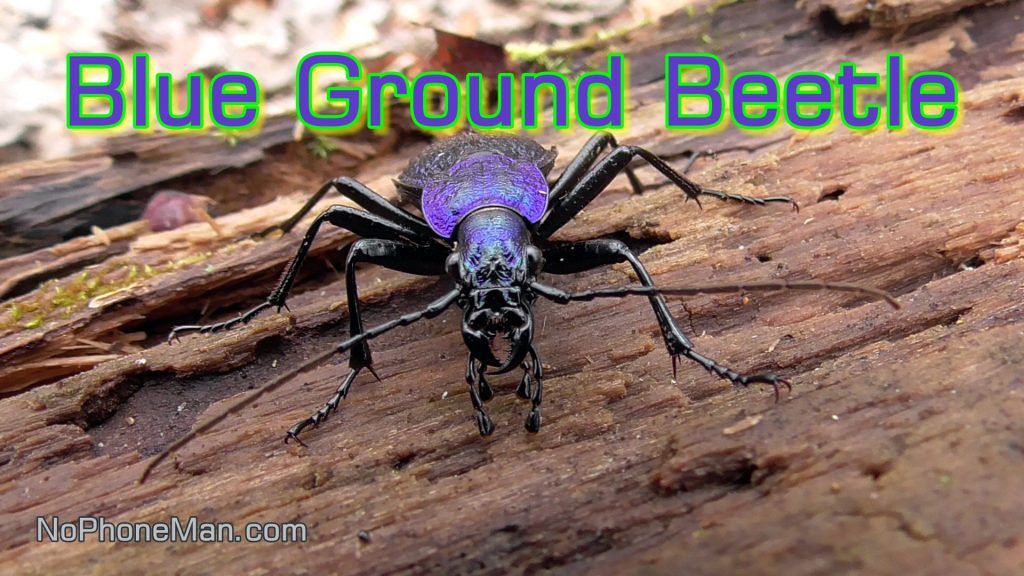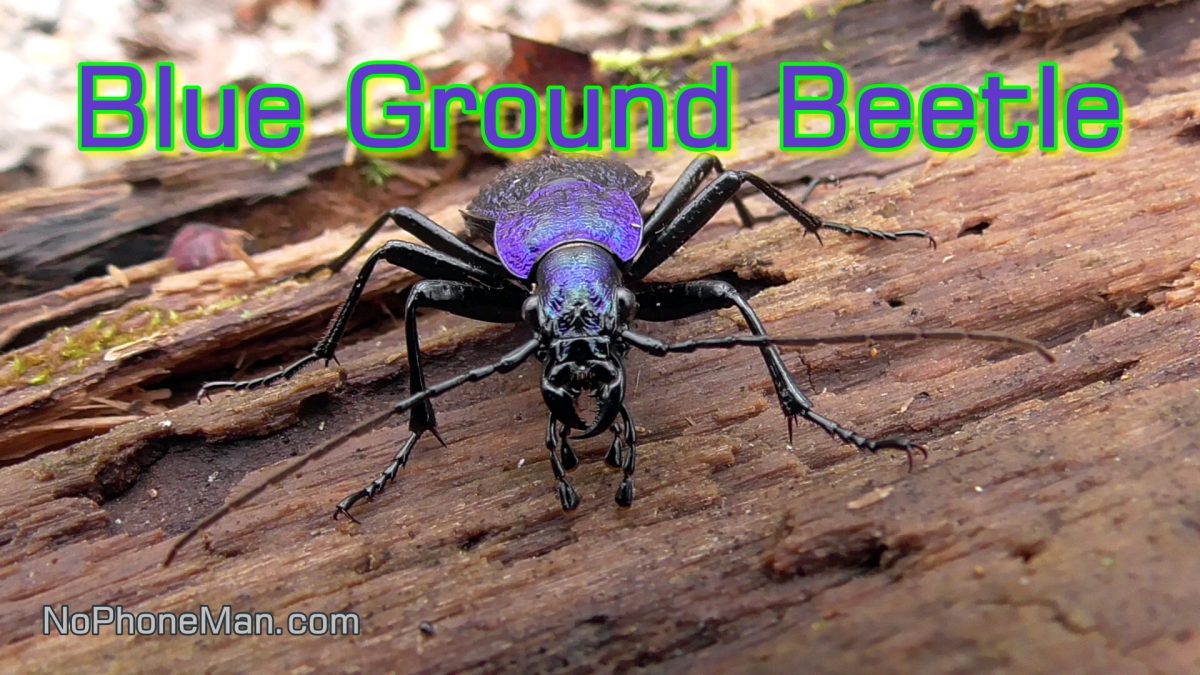
Winter is slowly coming to an end, but it is still very cold outside. On one of my recent walks through the woods, I came across the rather rare sight, when I spotted a Blue Ground Beetle (Carabus Intricatus) walking on the forest floor. While Blue Ground Beetles are known to hibernate during the winter months, in some places or in times when it’s not so cold, they can be seen during the winter months as well.
But here in Central Europe they typically seek shelter in underground burrows or other protected areas to survive the cold temperatures. Hibernation allows them to conserve energy and wait for more favorable conditions before becoming active again. Still, even though this year’s March has been unseasonably cold, with temperatures dipping to -10 degrees Celsius on some days, this one specimen was out and about, ready to get the year off into a vibrant start. Cold be damned.
Another thing that made the encounter rare is that the Blue Ground Beetles are predominantly nocturnal creatures. Unlike them, as a human I can’t navigate the wilderness that well at night, so my forest strolls are mostly limited to the daylight hours, which unfortunately means that I rarely get to see the nocturnal creatures. But as this encounter demonstrates, nature is never short on treats and blessed me with this one even though it was late morning.
The gorgeous metallic blue hues on his exoskeleton were mesmerizing. The iridescent appearance of the exoskeleton reflected light in a unique way, creating the striking coloration which, along with the beetle’s quite impressive size, quickly attracted my attention, and I believe it shows in the video as well.
Blue Ground Beetles are known to be predatory insects that feed on a variety of small invertebrates, especially slugs. That makes them very beneficial as natural pest control agents. But as forest dwellers, they primarily hunt forest dwelling slugs, like Lehmannia Marginata, which is shown in the video from another encounter I had with the creature.
While they may consume Spanish slugs – the bane of a gardener – their preferred habitat being forests and not human gardens makes them more helpful to a mushroom forager than a gardener.
But… even though predators themselves, Blue Ground Beetles are predated on as well with birds being one of their biggest threats. Along with other insect-eating animals, of course, such as small mammals and reptiles.
The nocturnal behavior of Blue Ground Beetles can serve as a survival mechanism to avoid diurnal predators like birds, as many birds are less active or do not hunt at night. By being active during the night, Blue Ground Beetles can reduce their risk of predation and increase their chances of finding food and mates under the cover of darkness.
And that’s why when I saw this beetle out during the day, especially now when winter is at its end and the birds are highly active to start the new broods, and the whole flocks of migratory birds pass through as they return from the warm climates, I worried the beetle could quickly become dinner so I moved him into a damp and rotten wood where he quickly found new shelter. I love my birds, but this beetle is too beautiful and beneficial to be such easy pickings on my watch.
With the beetle safely buried in the damp log, I was able to go on with my day, knowing that this valuable insect is safe and sound to keep slugs off my shrooms.
Physical Characteristics:
One of the most striking features of the Blue Ground Beetle is, obviously, its mesmerizing exoskeleton, adorned with hues of metallic blue. This iridescent appearance is not merely for show; it serves as a form of camouflage and defense against predators.
In terms of size, these beetles grow on averge to about 25-40 mm, showcasing a robust and formidable build. This stature aids them in their role as efficient predators in their ecosystem.
Habitat and Distribution:
The Blue Ground Beetle finds its home primarily in the forests and wooded areas of Central Europe. Here, amidst the lush foliage and decaying logs, they carve out their niche as essential components of the forest ecosystem.
Within this habitat, these beetles seek shelter in underground burrows, leaf litter, or beneath rotting logs. These secluded spots provide not only protection from predators but also a suitable environment for hibernation during colder months.
Behavior and Diet:
As nocturnal creatures, Blue Ground Beetles are most active during the cover of night. This behavior serves as a survival strategy, allowing them to evade diurnal predators such as birds. Under the veil of darkness, they emerge to hunt for their prey, which primarily consists of small invertebrates.
One of their favorite meals includes various species of slugs, making them invaluable allies to gardeners and forest ecosystems alike. By preying on these often problematic pests, Blue Ground Beetles contribute significantly to natural pest control.
Ecological Importance:
In the intricate web of forest life, Blue Ground Beetles play a crucial role. As predators, they help regulate populations of invertebrates, particularly slugs, which can otherwise wreak havoc on vegetation.
Their presence benefits not only the forest ecosystem but also neighboring human habitats. For gardeners, these beetles offer a natural and effective means of controlling slug populations without the need for harmful chemicals.
Conservation Status:
While not considered endangered, the Blue Ground Beetle, like many other species of beetles, faces threats from habitat loss and degradation. Conservation efforts aimed at preserving their forest habitats and raising awareness of their importance in ecosystems are crucial for their continued well-being.
Conclusion:
The Blue Ground Beetle, with its captivating metallic blue hues and voracious appetite for slugs, stands as a testament to nature’s ingenuity. In the shadowy realms of the forest floor, these nocturnal hunters play an essential role in maintaining the delicate balance of their ecosystem.





